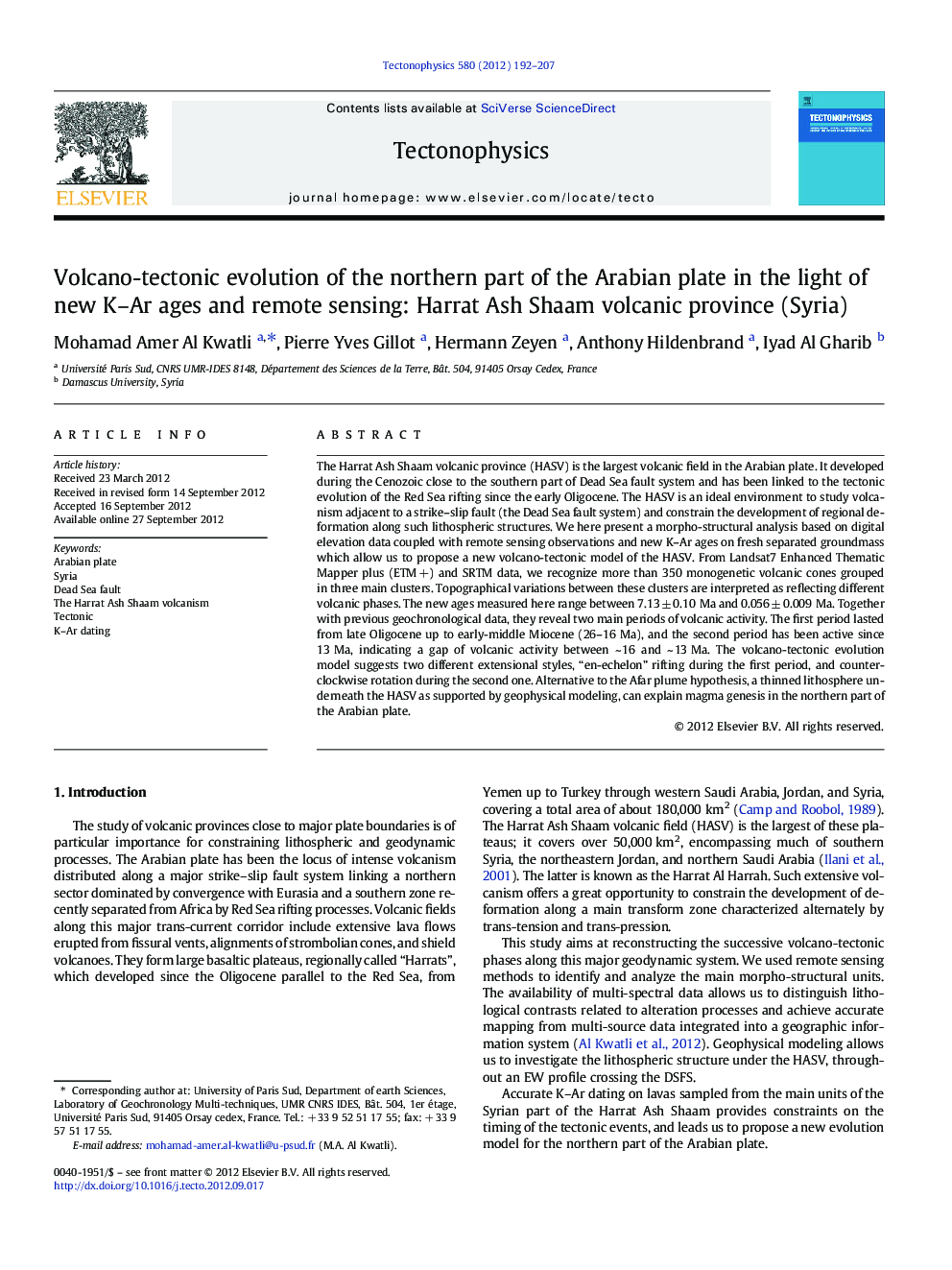| کد مقاله | کد نشریه | سال انتشار | مقاله انگلیسی | نسخه تمام متن |
|---|---|---|---|---|
| 6434191 | 1636805 | 2012 | 16 صفحه PDF | دانلود رایگان |

The Harrat Ash Shaam volcanic province (HASV) is the largest volcanic field in the Arabian plate. It developed during the Cenozoic close to the southern part of Dead Sea fault system and has been linked to the tectonic evolution of the Red Sea rifting since the early Oligocene. The HASV is an ideal environment to study volcanism adjacent to a strike-slip fault (the Dead Sea fault system) and constrain the development of regional deformation along such lithospheric structures. We here present a morpho-structural analysis based on digital elevation data coupled with remote sensing observations and new K-Ar ages on fresh separated groundmass which allow us to propose a new volcano-tectonic model of the HASV. From Landsat7 Enhanced Thematic Mapper plus (ETM +) and SRTM data, we recognize more than 350 monogenetic volcanic cones grouped in three main clusters. Topographical variations between these clusters are interpreted as reflecting different volcanic phases. The new ages measured here range between 7.13 ± 0.10 Ma and 0.056 ± 0.009 Ma. Together with previous geochronological data, they reveal two main periods of volcanic activity. The first period lasted from late Oligocene up to early-middle Miocene (26-16 Ma), and the second period has been active since 13 Ma, indicating a gap of volcanic activity between ~ 16 and ~ 13 Ma. The volcano-tectonic evolution model suggests two different extensional styles, “en-echelon” rifting during the first period, and counterclockwise rotation during the second one. Alternative to the Afar plume hypothesis, a thinned lithosphere underneath the HASV as supported by geophysical modeling, can explain magma genesis in the northern part of the Arabian plate.
⺠Intra-continental volcanism in Syria records recent geodynamics of the Arabian plate ⺠New satellite image analyses and K-Ar dating reveal 2 successive main volcanic phases ⺠First, NW-SE en-echelon lineaments developed along the main DSFS transform corridor ⺠Volcanism since 13 Ma records counterclockwise block rotation within North Arabia ⺠We propose a model where the volcanism is controlled by lithosphere heterogeneity
Journal: Tectonophysics - Volume 580, 10 December 2012, Pages 192-207